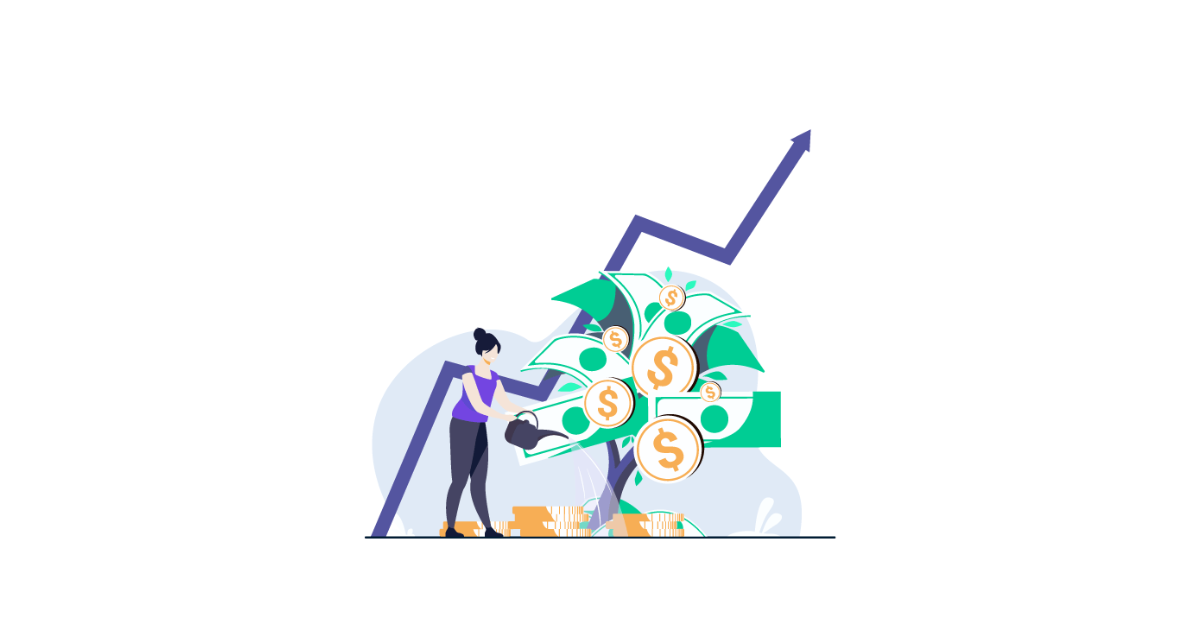Navigating Series A funding: Expert insights and strategies
You've heard whispers of this mythical Series A funding, a pivotal milestone in the startup saga. But what's all the fuss about, and why does it...
10 min read
 Jeff Erickson
July 11, 2024
Jeff Erickson
July 11, 2024
In the world of startup growth, funding rounds are the essential fuel that propels your company to new heights. Among these critical milestones, Series A and Series B funding stand out as key game-changers—each with its distinct strategies, investor expectations, and company valuations.
Think of Series A and Series B not as competing rivals but as dynamic allies on your startup's journey to success. While they share a common goal, each round takes your company through unique phases of growth, offering tailored support and resources along the way.
So, let's embark on an exciting exploration of Series A and Series B funding, unveiling what makes each round an indispensable stepping stone toward greatness. Together, these two mighty funding phases create a powerful partnership that can take your startup to new frontiers!
Key takeaways:
.png?width=300&height=300&name=founder-money%20(1).png)
Picture this: you've poured your blood, sweat, and tears into your startup, transforming it from a mere spark of an idea into a thriving company. But to reach stratospheric heights, you need capital—and that's where funding rounds swoop in to save the day, providing the financial firepower to turn your ambitious growth dreams into reality.
These pivotal moments in a company's lifecycle can be exhilarating yet emotionally intense for everyone on board. Many startups embark on a classic adventure that includes seed funding, Series A, Series B, and maybe even more thrilling chapters.
But these rounds aren't just about raking in the dough; they're about forming game-changing alliances. Each new chapter brings fresh faces to the table—investors with unique expectations and challenges that'll test the mettle of your business and team. For founders aiming to secure that sweet, sweet Series A and Series B funding, mastering the ins and outs of each stage is the ultimate key to success.
Just like how a tiny acorn grows into a mighty oak, seed funding plants the initial capital your startup needs to blossom into a thriving enterprise. This early-stage cash injection helps you finesse your brilliant idea, dig deep into market research, whip up the first dazzling version of your product, and rally a tight-knit team of trailblazers.
During this exciting stage, your investors are the ultimate dream believers—think angel investors, supportive pals, and your very own family fan club. With limited hard data to go on, they're placing their bets on your unstoppable vision and fiery passion. In return for their trust, they'll snag a slice of equity in your budding company.
In 2020, the average seed funding round clocked in at a cool $2.2 million—a testament to the game-changing power of a stellar team nurturing a promising product. So, go forth and plant those seeds of startup success—your entrepreneurial journey awaits!
Seed investors are the daring trailblazers who jump on board your startup when it's still in its infancy—often before there's even a solid product or cash flow. During these thrilling early stages, they're not counting on immediate profits. Nope, these bold backers are rolling the dice, investing in your extraordinary vision and your team's potential to shake up the market.
These early supporters have their sights set on long-term growth and eventual returns, which can take a while to bloom. In a nutshell, they're giving your dream team the vital funds needed to either conquer or, well, learn from a stumble or two. Because let's face it – a stellar company calls for more than just a killer idea; it demands a brilliant team that can tackle challenges head-on and adapt on the fly.
While both Series A and Series B funding rounds are pivotal for your startup's growth, they're definitely not two peas in a pod. Let's dissect the key differences that make each round a unique force to be reckoned with:
Series A is all about grabbing that initial traction and turning it into substantial growth. Picture Series A as your startup's high-octane fuel, catapulting you from a promising product with early fans to a thriving, unstoppable force. Time to beef up your team, fine-tune your brainchild, and make some serious waves.
On the flip side, Series B focuses on taking your proven business model and scaling it up. You've nailed that sweet market fit, and now it's time to shoot for the stars (and maybe even snatch up some international turf). Series B investors are on the hunt for companies primed to become the next big thing in their industries.
So, whether you're knee-deep in Series A or gunning for that juicy Series B round, remember: both chapters play a crucial role in your startup's epic journey to domination. Buckle up and get ready to make funding history!
So, you're ready to level up and snag that sweet Series A moolah. But what exactly are investors looking for in your not-so-little-anymore startup? They're after companies that have busted out of the seed stage and are raring to soar. Here's the lowdown on the essential ingredients to catch a Series A investor's eye:
Master these essential elements, and you'll be well on your way to securing that coveted Series A funding. So go forth, startup warrior, and make your mark on the funding battlefield!
What better way to wrap your head around the world of Series A funding than by peeking at past triumphs? Taking a leaf out of the books of victorious startups can offer valuable insights into the minds of investors. Allow us to present two stellar examples:
Airbnb
Back in 2010, this disruptive platform snagged a cool $7 million in Series A funding. The cash infusion paved the way for Airbnb to fine-tune its platform and skyrocket its user base. With a fresh take on an untapped market, investors couldn't resist the chance to hop aboard this game-changer.
Slack
That same year, team collaboration powerhouse Slack scooped up $5 million in Series A dough. The company funneled its newfound resources into product development and amassed a crack team of experts. Slack's early wins and crystal-clear vision made it a hot ticket for eager investors.
The secret sauce in these success stories? A potent blend of traction, an all-star team, and massive market potential. So, whether you're chasing Series A or Series B funding, remember: these key factors are your golden ticket to wooing investors and launching your startup into the stratosphere.
Ready to play in the Series B arena? You'll need to check off these essential items on the investor wish list to secure your spot in the big leagues:
Rock-solid business model
First up, prove your business model is built to last. Showcase strong financials, a thriving customer base, and a crystal-clear roadmap to profitability. Your startup needs to scream, "We're in it for the long haul!"
The dream team
Next, assemble an all-star squad. Investors crave a powerhouse lineup of seasoned pros, ready to steer your company toward greatness. Be prepared for them to scrutinize your leadership bench strength and employee expertise under a microscope.
Scalability superhero
Finally, your product or service must be primed for a massive growth spurt. Can you handle a tidal wave of new customers? Are your operations prepped for expansion? Tackle these investor inquiries head-on to show them you're more than ready for the big time.
So, gear up, and get your Series B game face on. With these critical elements in your corner, you'll be well-equipped to snag that coveted Series B funding and continue your unstoppable journey to startup stardom.
As your startup ascends the funding ladder from Series A to Series B, you'll need to juggle shifting investor expectations. A tall order, indeed—but nothing a battle-tested founder like you can't handle!
In a Series A round, your investors crave potential. Their discerning gaze will scan for a sprawling market and a product that outshines the competition. They want reassurance that you can magnetically attract customers. Sure, they're game for a bit of risk, but they need to glimpse that irresistible glimmer of promise.
Fast-forward to Series B, and the stakes get higher. Your investors now focus on skyrocketing your business into the stratosphere. Dominating your market becomes priority numero uno. Be ready for investors to probe your revenue streams with a fine-toothed comb, ensuring your business model can weather the storm of rapid-fire growth.
Adapting to these evolving expectations is crucial in your funding quest. For Series A, spotlight your vision, those all-important early wins, and the secret sauce that sets your company apart.
When Series B rolls around, flaunt robust financials, a failsafe route to profitability, and jaw-dropping growth spurts. Prove that you're the undisputed champion of your market, and you'll have investors eating out of the palm of your hand.
As your startup gains traction, amasses a fan club of loyal customers, and morphs from a bright idea into a thriving entity, get ready to leap into the electrifying world of Series A funding. This pivotal stage turbocharges your company into a bustling ecosystem's growth spurt.
A word of caution: securing Series A funding can make or break your startup's financial destiny, with less than 10% of seed-funded companies soaring to this elite level.
The leap from Seed Funding to Series A marks a seismic mindset shift—for your company and eagle-eyed investors alike. It's go-time for breakneck growth, key hiring decisions, and irrefutable proof that your initial success wasn't just beginner's luck.
Early victories must evolve into a jaw-dropping pattern of consistent wins to maintain investor confidence. Raising Series A funding is a different beast compared to seed funding. Now, investors crave a bulletproof plan and a no-nonsense route to profitability—because a stellar business idea alone won't cut it.
Sure, both seed funding and Series A share the ultimate goal of propelling your startup to greatness. However, the dynamics of these two stages are significantly different. Here's a breakdown of what sets them worlds apart:
|
Feature |
Seed funding |
Series A funding |
|---|---|---|
|
Typical Investment Size |
Tens of thousands to $2 million |
$2 million to $15 million |
|
Valuation |
$3 million to $6 million |
$10 million to $15 million |
|
Investors |
Angel Investors, Friends, and Family |
Venture Capitalists |
|
Focus |
Validating Idea & Early Stage Development |
Proven Traction and a Defined Growth Strategy |
|
Metrics |
Rough Estimates |
Detailed Financials and Data-Driven |
|
Risk |
Very High |
Lower Compared to Seed, but still high. |
|
Due Diligence |
Founder focused |
Company focused. The team is a secondary component of the company. |
|
Post Investment |
Strategic guidance |
Board Seats |
|
Control |
Founders |
Shared |
Brace yourself, startup warrior, because Series B funding is all about cranking your company's growth into overdrive and claiming your throne as industry royalty. This adrenaline-pumping stage is where you go full throttle to capture a king-sized chunk of market share—just like Stripe's triumphant 2012 crusade.
Investors crave evidence of mind-blowing growth on every front. Your primary mission? Turbocharging a smooth humming machine while dialing in your product quality. But as your company marches into Series B territory, investors pause to scrutinize your past performance under a microscope.
So, steel yourself for a Series B adventure where domination is the name of the game—and where your startup can ascend to legendary status in the ruthless realm of business.
It's true; Series B funding has a rep for being the ultimate gauntlet for founders. While it may not be inherently tougher than other stages, the stakes and pressures skyrocket to unprecedented heights. It's a whole new ballgame, folks!
Gone are the days when a dazzling vision could single-handedly woo investors. Now, your trusty trifecta—product, business strategy, and revenue figures—must sing in perfect harmony to prove your startup's worth.
Think of it this way: you're no longer tending to a lone seedling but nurturing an entire blossoming forest. As Series B investors form a discerning gardening club, they'll inspect your management prowess thus far. So, buckle up and get ready to wow them with your green thumb!
It's very rare that a company successfully raises a Series B without first raising a Series A. So, the answer to this question hinges on your startup's current position in this exhilarating journey. If you haven't already raised a Series A, you're probably not ready for a Series B.
There are exceptions to every rule, so thoroughly consider your specific goals, growth rate, and your comfort level with investor relations. Also, you should definitely consult with your trusted mentors and advisors on this one.
Series B isn’t necessarily "better" than Series A; it just serves a different purpose. While Series A focuses on establishing product-market fit and early growth, Series B is about scaling a proven business model. The right round for your startup depends on its current stage and funding needs.
The main difference between Series A and Series B funding is the focus of each stage. Series A aims to help startups achieve product-market fit and build initial traction, while Series B is about scaling the business, expanding market reach, and driving significant growth. As a startup progresses, investor expectations and the amount of funding typically increase from Series A to Series B.
Series A comes first. It’s the initial major funding round aimed at helping startups grow and prove their business model. Series B follows once the startup has gained traction and is ready to scale its operations and expand its market presence.
The timing between Series A and Series B funding typically ranges from 12 to 24 months. However, it varies based on the startup's growth, market conditions, and how quickly it meets the milestones set during Series A.
Mastering the realm of startup funding goes beyond digesting definitions; it's about embracing the rollercoaster ride of highs and lows each stage brings. As you venture into Series A vs Series B funding, remember that both propel your startup toward lightning-fast growth while satisfying investor returns.
Despite sharing some common ground, these funding rounds have distinct roles and beckon investors with unique goals and risk appetites. Grasping these contrasts is your golden ticket to conquering the vast, ever-evolving world of venture capital—and locking down the crucial funds your business needs to flourish.
Want a personal guide on your fundraising adventure? Reach out to Forecastr today to learn about several options tailored to help early-stage founders like you succeed in fundraising!
Get notified about new events, free resources, and fresh content

You've heard whispers of this mythical Series A funding, a pivotal milestone in the startup saga. But what's all the fuss about, and why does it...

What are the key differences between seed funding vs Series A? Raising capital is always a complex job, and each stage of financing brings its unique...
.png)
No moment is more critical in the growth of an early-stage startup than when the founders roll up their sleeves and begin the process of raising...